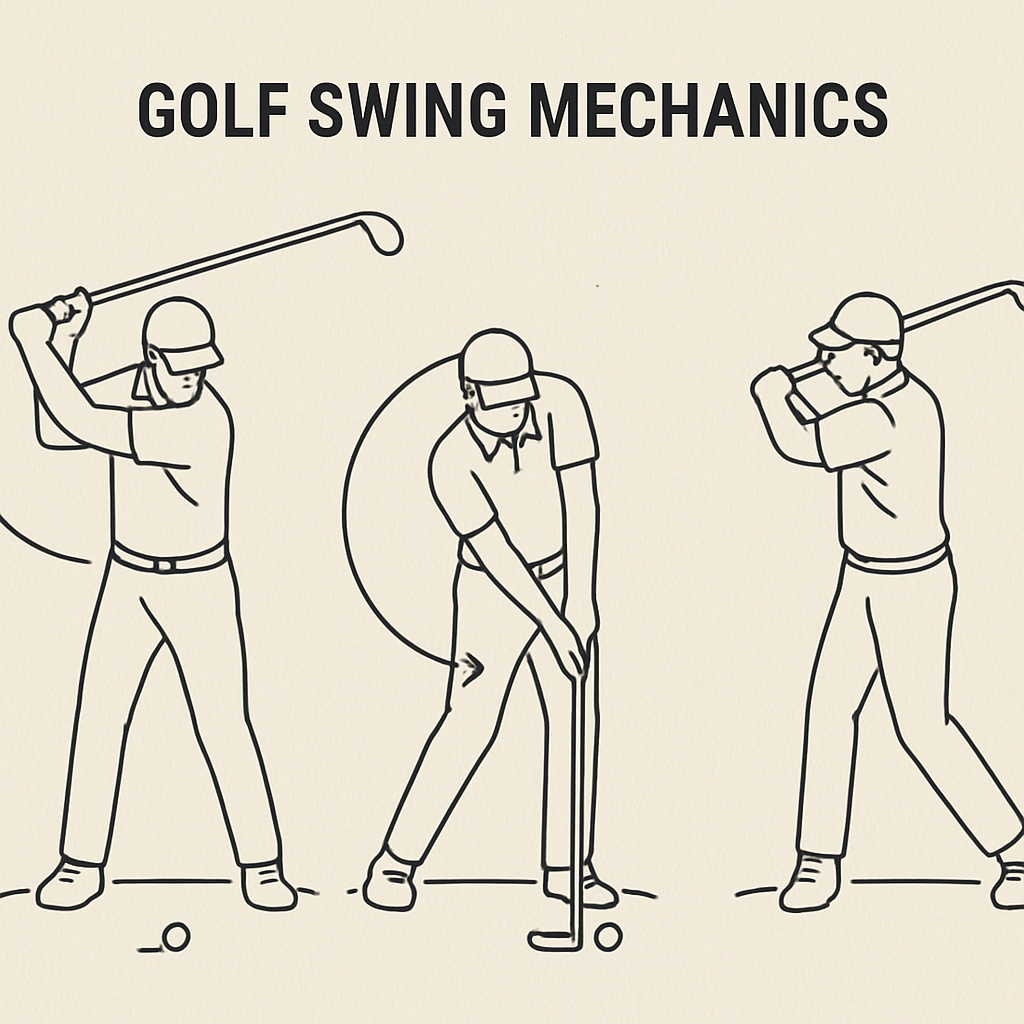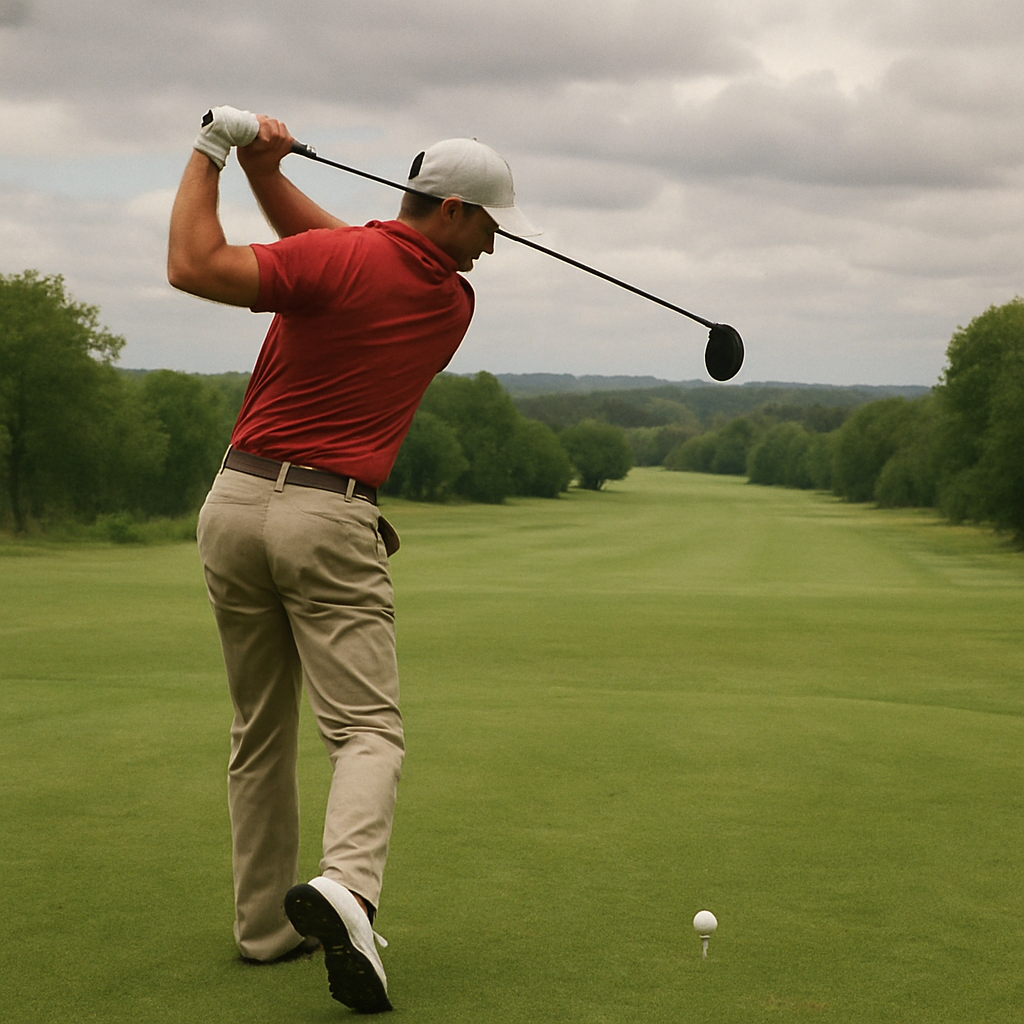3 Golf Swing Fundamentals How to Swing a Golf Club for Distance

The Setup: Proper Golf Swing Posture
Your setup is the foundation of a good golf swing. Proper golf swing posture involves standing with your feet shoulder-width apart, knees slightly bent, and your body leaning slightly forward from the hips. Your arms should hang naturally, with the club resting behind the ball. This position helps you maintain balance and prepares your body for a powerful swing. Additionally, the correct setup ensures that your body is aligned with the target, creating a straight path for the club. Consistently practicing your setup can lead to improved accuracy and better shot outcomes.
The Backswing: Building Momentum
The backswing is where you start building momentum. Begin by rotating your shoulders and hips away from the target while keeping your eyes on the ball. Your lead arm should remain straight, and your wrists should hinge as you lift the club. The key is to create a smooth, controlled motion that sets the stage for a powerful downswing. A good backswing creates a coil effect, storing energy that will be released during the downswing. Developing a consistent backswing rhythm is essential for generating maximum power and maintaining control over your shots.
The Downswing: Releasing Power
The downswing is where the magic happens. Initiate the motion by shifting your weight to your front foot while unhinging your wrists. Your hips should rotate toward the target, followed by your shoulders and arms. This sequence of movements allows you to transfer energy from your body to the club, resulting in a powerful impact with the ball. Timing is crucial during the downswing, as an early or late release can lead to mis-hits. Practicing the downswing with focused drills can help you perfect the timing and maximize the energy transfer to the ball.
How to Swing a Golf Club for Distance

Increasing Your Golf Swing Speed
Swing speed is a critical factor in determining how far the ball will travel. To increase your golf swing speed, focus on building strength and flexibility in your core and lower body. Regular exercises like squats, lunges, and planks can help improve your power and stability. Additionally, incorporating exercises that target your upper body and wrists can contribute to faster clubhead speed. Practice swinging with a weighted club or resistance bands to build muscle memory and increase your speed over time. This approach not only enhances your physical capabilities but also improves your confidence in executing high-speed swings.
Perfecting Your Golf Swing Alignment
Alignment is another crucial aspect of a powerful golf swing. Proper alignment ensures that your body is positioned correctly relative to the target line. To achieve this, set up an alignment rod or club on the ground parallel to your target line. Position your feet, hips, and shoulders parallel to the rod, ensuring that your body is aligned with the target. Consistent practice with alignment drills can lead to better shot accuracy and reduced variability in your game. By focusing on alignment, you’ll be able to hit straighter shots, making it easier to navigate the course effectively.
The Importance of Golf Swing Follow-Through
A complete follow-through is essential for maximizing distance and accuracy. After impact, continue rotating your body and arms toward the target until your club points in the direction of the ball’s flight. Your body should be balanced on your front foot, with your back foot up on its toes. A proper follow-through not only helps in maintaining balance but also ensures that you have fully committed to the shot. Practicing your follow-through can lead to more consistent ball flights and improved overall performance on the course.
Golf Swing Drills for Distance
Practicing specific drills can help reinforce the fundamentals and improve your golf swing for distance. Here are a few drills to incorporate into your practice routine. These drills are designed to target various aspects of the swing, allowing you to work on specific areas that need improvement. Regular practice of these drills can lead to significant gains in both distance and accuracy, making them a valuable addition to your training regimen.
1. The “L to L” Drill
This drill focuses on the proper wrist hinge during the swing. Start by taking the club back until your lead arm forms an “L” shape with the club. Then, swing through to the finish position, creating an “L” with your trailing arm. This drill helps you maintain the correct wrist hinge and follow-through. By practicing the “L to L” drill, you’ll develop a better sense of timing and control, leading to more consistent swings and improved shot distance.
2. The Alignment Stick Drill
Place an alignment stick or club on the ground parallel to your target line. Practice swinging while maintaining proper alignment, ensuring that your body and club are aligned with the stick. This drill helps reinforce the importance of alignment in your swing. Consistent practice of the alignment stick drill can lead to better shot accuracy and confidence in your alignment, translating to more reliable performance on the course.
3. The One-Arm Swing Drill
Practice swinging with only your lead arm to improve your swing mechanics and balance. This drill helps you develop a smooth, controlled swing and reinforces the importance of proper body rotation. By isolating the lead arm, you’ll gain a deeper understanding of the role it plays in the swing, leading to improved coordination and power. Regular practice of the one-arm swing drill can lead to enhanced swing mechanics and more balanced shots.
Personalized Golf Accessories for Better Play
In addition to mastering your swing, having the right equipment can enhance your performance on the course. Personalized golf ball markers and custom golf ball stamps are great ways to add a personal touch to your game. These accessories not only serve a functional purpose but also allow you to express your personality on the course, making the game more enjoyable and engaging.
Custom Golf Ball Stamps and Markers
Custom golf ball stamps allow you to easily identify your ball on the course, reducing the chance of playing the wrong ball. Personalized golf ball markers can also add a unique flair to your game and make it easier to mark your ball on the green. Investing in personalized accessories can enhance your golfing experience and provide a sense of pride and ownership in your equipment. Additionally, they make for great conversation starters and can help you stand out in a crowd.
Conclusion
Improving your golf swing for distance requires a combination of proper technique, physical conditioning, and practice. By focusing on the fundamentals of golf swing mechanics, increasing your swing speed, and perfecting your alignment and follow-through, you can enhance your performance on the course. Remember to incorporate drills into your practice routine and consider personalized accessories to elevate your game further. With dedication and practice, you’ll be hitting longer, more accurate shots in no time. Keep in mind that improvement takes time, and patience is key to achieving lasting results in your golf game.
